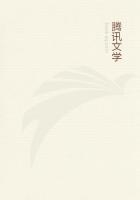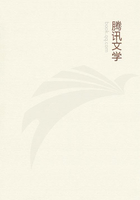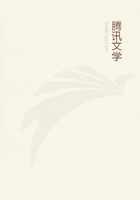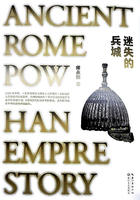The second source is the Atharva-Veda with the Brahmanas. The peculiarity of the Atharva is its collection of magical incantations spells and fragments of folklore. These are often, doubtless, of the highest antiquity. Sorcery and the arts of medicine-men are earlier in the course of evolution than priesthood. We meet them everywhere among races who have not developed the institution of an order of priests serving national gods. As a collection, the Atharva-Veda is later than the Rig-Veda, but we need not therefore conclude that the IDEAS of the Atharva are "a later development of the more primitive ideas of the Rig-Veda". Magic is quod semper, quod ubique, quod ab omnibus; the ideas of the Atharva-Veda are everywhere; the peculiar notions of the Rig-Veda are the special property of an advanced and highly differentiated people. Even in the present collected shape, M. Barth thinks that many hymns of the Atharva are not much later than those of the Rig-Veda. Mr. Whitney, admitting the lateness of the Atharva as a collection, says, "This would not necessarily imply that the main body of the Atharva hymns were not already in existence when the compilation of the Rig-Veda took place". The Atharva refers to some poets of the Rig (as certain hymnists in the Rig also do) as earlier men. If in the Rig (as Weber says) "there breathes a lively natural feeling, a warm love of nature, while in the Atharva, on the contrary, there predominates an anxious apprehension of evil spirits and their magical powers," it by no means follows that this apprehension is of later origin than the lively feeling for Nature. Rather the reverse. There appears to be no doubt that the style and language of the Atharva are later than those of the Rig. Roth, who recognises the change, in language and style, yet considers the Atharva "part of the old literature". He concludes that the Atharva contains many pieces which, "both by their style and ideas, are shown to be contemporary with the older hymns of the Rig-Veda".
In religion, according to Muir, the Atharva shows progress in the direction of monotheism in its celebration of Brahman, but it also introduces serpent-worship.
Journal of the American Oriental Society. iv. 253.
Muir, ii. 446.
Ibid., ii. 448.
Ibid., ii. 451.
As to the Atharva, then, we are free to suppose, if we like, that the dark magic, the evil spirits, the incantations, are old parts of Indian, as of all other popular beliefs, though they come later into literature than the poetry about Ushas and the morality of Varuna. The same remarks apply to our third source of information, the Brahmanas. These are indubitably comments on the sacred texts very much more modern in form than the texts themselves. But it does not follow, and this is most important for our purpose, that the myths in the Brahmanas are all later than the Vedic myths or corruptions of the Veda. Muir remarks, "The Rig-Veda, though the oldest collection, does not necessarily contain everything that is of the greatest age in Indian thought or tradition. We know, for example, that certain legends, bearing the impress of the highest antiquity, such as that of the deluge, appear first in the Brahmanas." We are especially interested in this criticism, because most of the myths which we profess to explain as survivals of savagery are narrated in the Brahmanas. If these are necessarily late corruptions of Vedic ideas, because the collection of the Brahmanas is far more modern than that of the Veda, our argument is instantly disproved. But if ideas of an earlier stratum of thought than the Vedic stratum may appear in a later collection, as ideas of an earlier stratum of thought than the Homeric appear in poetry and prose far later than Homer, then our contention is legitimate. It will be shown in effect that a number of myths of the Brahmanas correspond in character and incident with the myths of savages, such as Cahrocs and Ahts. Our explanation is, that these tales partly survived, in the minds perhaps of conservative local priesthoods, from the savage stage of thought, or were borrowed from aborigines in that stage, or were moulded in more recent times on surviving examples of that wild early fancy.
Muir, iv. 450.
In the age of the Brahmanas the people have spread southwards from the basin of the Indus to that of the Ganges. The old sacred texts have begun to be scarcely comprehensible. The priesthood has become much more strictly defined and more rigorously constituted.
Absurd as it may seem, the Vedic metres, like the Gayatri, have been personified, and appear as active heroines of stories presumably older than this personification. The Asuras have descended from the rank of gods to that of the heavenly opposition to Indra's government; they are now a kind of fiends, and the Brahmanas are occupied with long stories about the war in heaven, itself a very ancient conception. Varuna becomes cruel on occasion, and hostile. Prajapati becomes the great mythical hero, and inherits the wildest myths of the savage heroic beasts and birds.
The priests are now Brahmans, a hereditary divine caste, who possess all the vast and puerile knowledge of ritual and sacrificial minutiae. As life in the opera is a series of songs, so life in the Brahmanas is a sequence of sacrifices. Sacrifice makes the sun rise and set, and the rivers run this way or that.
The study of Indian myth is obstructed, as has been shown, by the difficulty of determining the relative dates of the various legends, but there are a myriad of other obstacles to the study of Indian mythology. A poet of the Vedas says, "The chanters of hymns go about enveloped in mist, and unsatisfied with idle talk".

